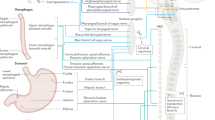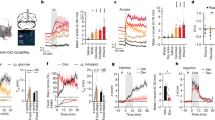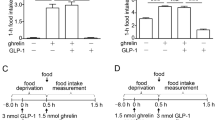Abstract
During a meal, multiple gastrointestinal sites are stimulated by ingested nutrients and their digestion products, initiating local gastrointestinal actions and producing a variety of potential feedback signals that can contribute to meal termination. During ingestion, gastric emptying is rapid, allowing a significant portion of ingested nutrients to enter the intestine. Gastric and duodenal vagal afferent fibers increase their electrophysiological activity in relation to the mechanical presence of ingested nutrients. On reaching the duodenum, nutrients also activate vagal chemosensitive elements and stimulate the release of a variety of brain gut peptides including cholecystokinin (CCK). CCK also activates vagal afferent fibers directly and modifies the response properties of vagal mechanosensitive fibers to gastric and duodenal loads. Blocking or eliminating these feedback signals results in increased meal size demonstrating their role in meal termination.
This is a preview of subscription content, access via your institution
Access options
Subscribe to this journal
Receive 12 print issues and online access
$259.00 per year
only $21.58 per issue
Buy this article
- Purchase on Springer Link
- Instant access to full article PDF
Prices may be subject to local taxes which are calculated during checkout
Similar content being viewed by others
Author information
Authors and Affiliations
Corresponding author
Rights and permissions
About this article
Cite this article
Moran, T., Ladenheim, E. & Schwartz, G. Within-meal gut feedback signaling. Int J Obes 25 (Suppl 5), S39–S41 (2001). https://doi.org/10.1038/sj.ijo.0801910
Published:
Issue Date:
DOI: https://doi.org/10.1038/sj.ijo.0801910
Keywords
This article is cited by
-
From neuroanatomy to behavior: central integration of peripheral signals regulating feeding behavior
Nature Neuroscience (2012)
-
Control of energy homeostasis by amylin
Cellular and Molecular Life Sciences (2012)
-
The effect of a low-fat, high-protein or high-carbohydrate ad libitum diet on weight loss maintenance and metabolic risk factors
International Journal of Obesity (2009)
-
Central Nervous System Regulation of Food Intake
Obesity (2006)



